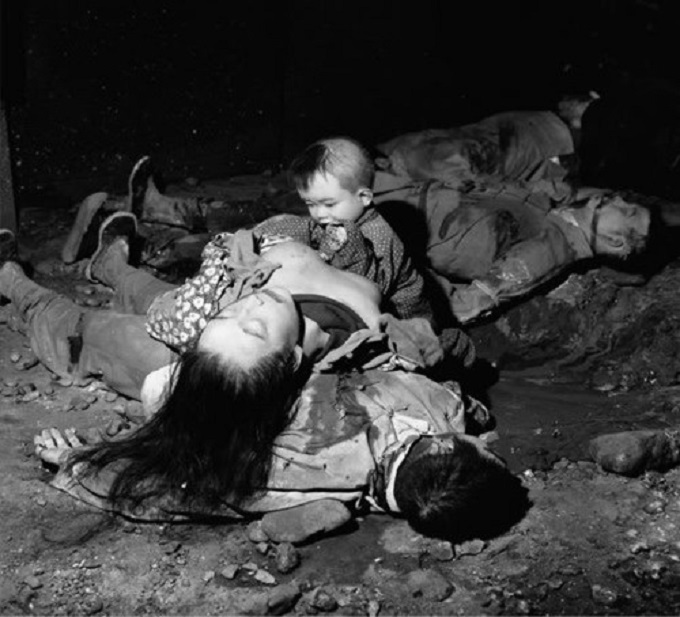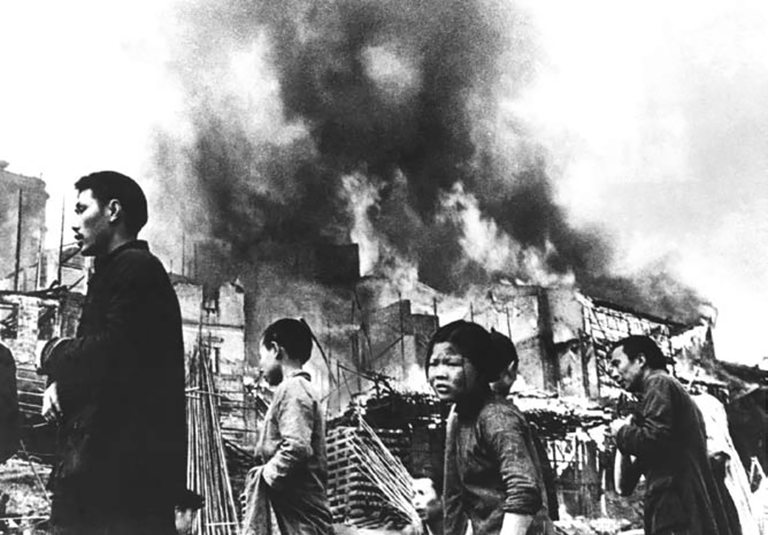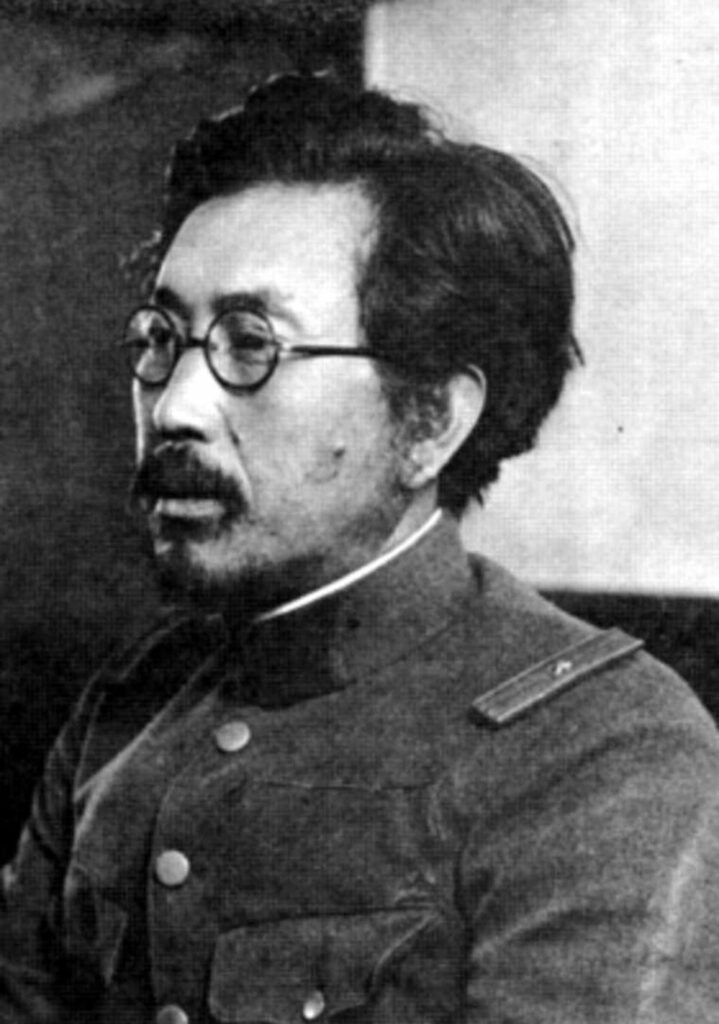Everyone knows about Pearl Harbor and Japan dragging the USA into World War II. Still, fewer are aware of the American Doolittle raid and the brutal Japanese reprisals to this daring counterpunch. Approximately five months after the Japanese attempt to cripple the American Pacific fleet, an unprecedented strike on the heart of the Japanese Empire was launched by the intrepid pilot Lt. Col. James Doolittle of the United States Army Air Force.

While the United States boosted the American people’s morale through the Doolittle raiders’ successful air raid on Japanese industrial strength, the Japanese army underwent a sickening rampage of reprisal in the Zhejiang-Jiangxi Campaign that killed 250,000 Chinese civilians.
Jimmy Doolittle and the Tokyo Raiders Strike Japan
After the sneak attack on America’s main Pacific naval base, President Roosevelt pushed for a response that would underscore the Japanese people’s danger of the situation that their leadership had put them in. While logistically, this was a challenge, a plan was devised to strike at the Japanese archipelago by launching B-25 bombers from Navy aircraft carriers. This had never been attempted before, and the Army bombers’ crews underwent extensive training to make sure they could take off from the carriers’ flight decks. On April 18, 1942, the bomber squadrons bombed strategic sites in Tokyo, Kobe, Yokohama, and Nagoya.
The raids went off largely as expected and were only vaguely anticipated by the Japanese armed forces, with limited antiaircraft fire and fighter response (that the crews claimed to respond to ably, shooting down several fighters with on-board machine guns). However, there was a wrinkle to the operation. Hornet and Enterprise’s task force had been sighted earlier than expected, and to avoid the Japanese scrambling to sink them, the bombers had launched further out. Fuel was a significant issue: none of the bombers could reach the designated airfields in free China that they were intended to. Most crew members bailed out or made emergency landings in the countryside of the Japanese-occupied provinces of Zhejiang and Jiangxi. One bomber instead flew to a Soviet Union airbase, and its crew was detained.

The brutality of the Japanese occupiers in China, observed in atrocities such as the Rape of Nanjing, meant no love for the occupying forces among the Chinese people. When they discovered the American airmen among them, they provided much help to get them safely on their way back to friendly bases. Doolittle, and the majority of the raiders, however, made it out of China safely. Doolittle himself, after losing all of the bombers on the raid, expected to be court-martialed. Instead, he was promoted twice, up to General, and brought to Washington DC, where he was awarded the Medal of Honor for the massive moral victory of striking back at Japan’s heart (and the blow to Japanese morale).
The Vengeful Japanese Attack After the Doolittle Raid

For the Chinese villagers’ acts of kindness, they were repaid with terror. The Japanese troops occupying Zhejiang and Jiangxi were able to capture eight members of the raiding party, executed three. They tortured the remaining five, one of whom died of dysentery while on a starvation diet. This pales compared to the punishments meted out on the Chinese civilian population for aiding and abetting the Americans’ escape. Guilt and complicity were assumed on the part of every man, woman, child, and even animal in every village in the two provinces, regardless of whether US armed forces had been there or not. This suspected complicity was punished with a brutal and merciless death. But this was not the beginning nor end of the occupiers’ atrocities. Foreign Christian missionaries were eyewitnesses to the Japanese reprisals. One, Father Wendelin Dunker, related it thus: “They shot any man, woman, child, cow, hog, or just about anything that moved, they raped any woman from the ages of 10 – 65, and before burning the town they thoroughly looted it.”

By June 11, the Japanese troops had escalated these depravities from villages and small towns to the city of Nanchang, which housed 50,000 souls. After surrounding the city to prevent escape, they stormed it in a frenzy of rape, murder, and looting. Eight hundred Nanchang women were rounded up into a warehouse for gang-raping, and men were slaughtered in the streets. The occupation lasted for a month before the entire city was systematically burned to the ground over three days, with nothing left standing but charred rubble. The Japanese troops moved on, laying waste to cities and towns across the region. In some regions, eighty percent of homes were destroyed, the survivors were left destitute. In August, the Japanese forces escalated their atrocities once again, deploying the resources of Unit 731, their secret biological and chemical weapons division.
The Untold Story of the Vengeful Japanese Attack After the Doolittle Raid
Knowing that the Zhejiang-Jiangxi region would be reoccupied by both Chinese troops and civilians after the Japanese forces’ withdrawal, Unit 731 unleashed a monstrous cocktail of biological weapons against the population. They poisoned wells, springs, and other water sources with cholera, typhoid, dysentery, paratyphoid bacteria and left infected food and water rations for hungry Chinese troops and civilians to locate. They even released plague-carrying fleas into the fields. While the destruction in the region made it difficult to identify an accurate number of casualties from this war crime, it is known that the disease was rampant even among the occupiers. Ten thousand Japanese troops in the Zhejiang-Jiangxi area were infected with cholera by the end of the war.

Few Japanese officers were convicted of war crimes as a result of this atrocity. Field Marshal Shunroku Hata, the campaign’s orchestrator, was sentenced to life imprisonment for his role. However, he was paroled in 1954. Today, sadly, this massacre has been mostly forgotten by North Americans. However, the Zhejiang-Jiangxi campaign and other appalling wartime acts like it and continue to inform Sino-Japanese relations.

0 Comments